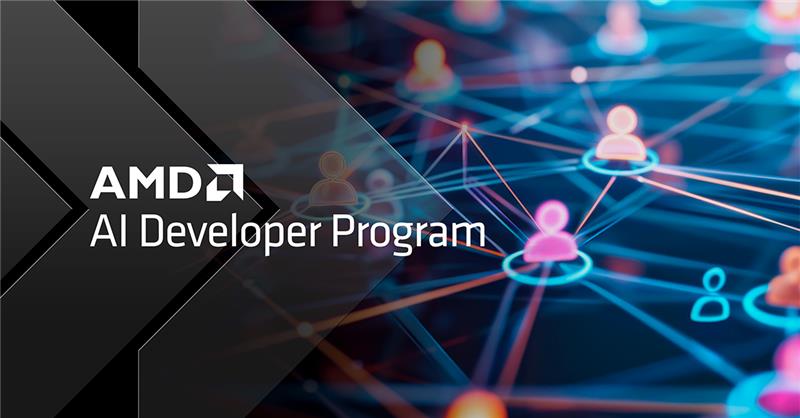AMD Driving the Next Frontiers of Science
Oct 21, 2025

From decoding genomes, to deploying new energy systems, to advancing national security, artificial intelligence is empowering researchers to tackle complex problems with unprecedented speed and precision. AMD is at the forefront of this transformation with full-spectrum AI infrastructure that combines leadership-class high-performance computing, cutting-edge AI accelerators, and an open software ecosystem—enabling researchers around the world to collaborate and drive the next wave of scientific breakthroughs.
Through deep co-innovation with national laboratories and research institutions worldwide, AMD technologies are accelerating discovery across Science, Energy, National security and beyond.
Empowering Global Scientific Research with the World’s Top Supercomputers
Spanning the globe, leadership-class supercomputers such as Frontier, El Capitan, LUMI, and Pawsey’s Setonix run on AMD Instinct™ GPUs and AMD EPYC™ CPUs. The architecture of these systems is designed to meet the demands of modern scientific workloads and optimize the convergence of AI and HPC, making them well suited for large-scale AI training and inference.
Frontier at Oak Ridge Leadership Computing Facility (OLCF) is the world’s first exascale supercomputer. Its architecture delivers outstanding double-precision performance, making it ideal for AI-enabled science. Frontier is powering the largest cosmological simulations ever conducted, modeling material behavior over million-fold longer timescales, advancing biomedical research from protein folding to brain tumor modeling, and driving next-generation simulations of fluid dynamics and turbulence for aerospace and launch systems. Frontier has a Gordon Bell finalist for fluid flow simulation in 2025, recognizing outstanding achievement in high-performance computing.
El Capitan, the world’s fastest supercomputer, exceeds 1.7 exaflops on HPL and is central to the U.S. Department of Energy (DOE) and National Nuclear Security Administration (NNSA) missions. In addition to advancing national security, it enables AI-driven research in fusion energy, climate modeling, drug discovery, advanced manufacturing, and materials science. Scientists at Lawrence Livermore National Laboratory (LLNL) and AMD have achieved a milestone in biological computing: completing the largest and fastest protein structure prediction workflow using the full power of El Capitan. Tuolumne, a companion system based on the same architecture, supports open science projects, including earthquake simulation, computational biology, and sustainable energy research. El Capitan has a Gordon Bell finalist for Digital Twin Tsunami research in 2025, recognizing outstanding achievement in high-performance computing.
LUMI, one of Europe’s fastest supercomputers, underpins transformative projects such as Destination Earth, an EU initiative to build a high-resolution digital twin of the planet generating up to 1 PB of data daily. LUMI is also advancing AI-driven cancer diagnostics, drug discovery, and personalized medicine through large-scale genomic analysis. Multilingual European large language models, including the Poro and Viking families, have been trained on LUMI by AMD Silo AI in collaboration with TurkuNLP at the University of Turku.
Pawsey Setonix at Australia’s Pawsey Supercomputing Research Centre is designed for hybrid HPC-AI workflows. It integrates machine learning with physics-based simulations to accelerate climate modeling, fluid dynamics, materials science, and geoscience. Setonix is also enabling domain-specific AI training in genomics (e.g., nanopore sequencing), astronomy (e.g., radio telescope signal processing), and mineral exploration.
A Broad Compute Portfolio to Accelerate Discovery
Scientific research is diverse—and so are its computational needs. AMD delivers a broad portfolio of compute architectures, optimized for the convergence of HPC and AI, to power discoveries across domains. AMD technologies are already enabling breakthroughs in cancer research, drug discovery, nuclear fusion, exotic materials development, ultra-efficient engine design, and stellar explosion simulations.
The Future of Science is Inextricably Linked to the Future of Computing
AMD is looking ahead to a hybrid, quantum-accelerated supercomputing era. Collaborations with leading institutions such as Oak Ridge National Laboratory are catalyzing this next frontier. The Oak Ridge Quantum Computing User Program (QCUP) provides access to state-of-the-art quantum resources, while a significant collaboration with AMD and IBM was recently announced focused on quantum-centric supercomputing, marking a major step toward integrating quantum computing with HPC and AI infrastructure.
Future demonstrations will showcase the convergence of HPC, AI, and quantum computing to solve the world’s most challenging problems—paving the way for transformative scientific breakthroughs.
Stay tuned for upcoming blogs in this series exploring the future of emerging solutions powered by AMD.









